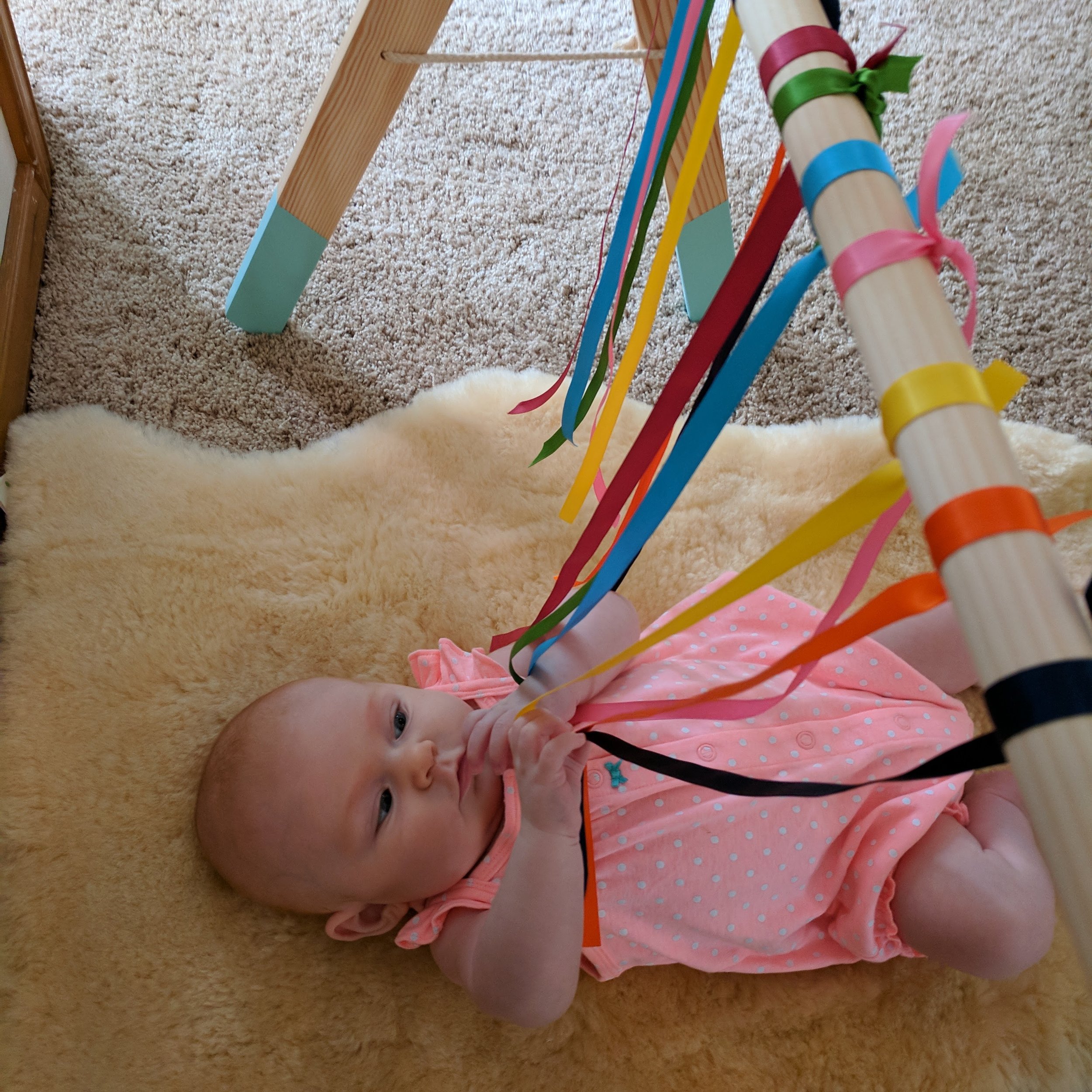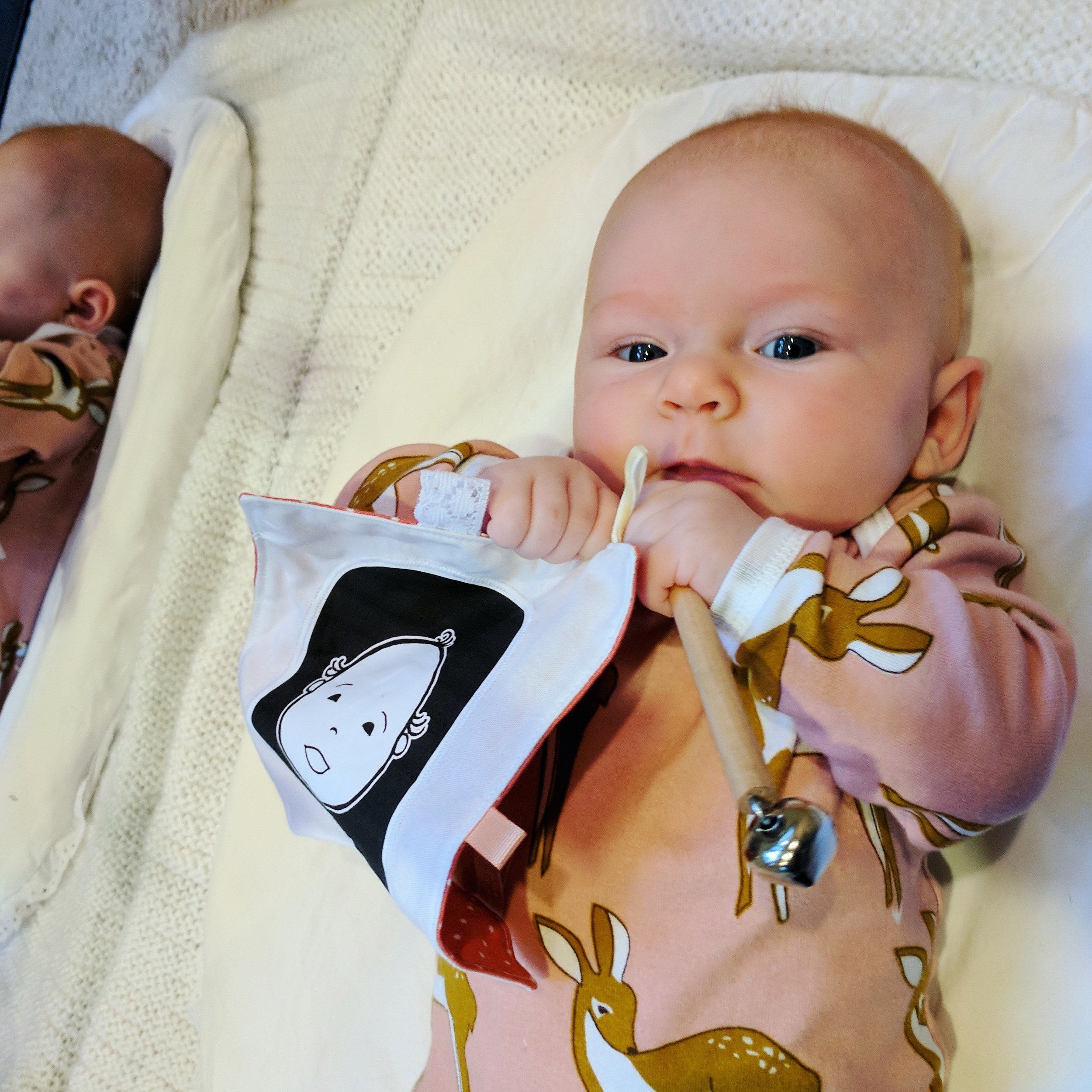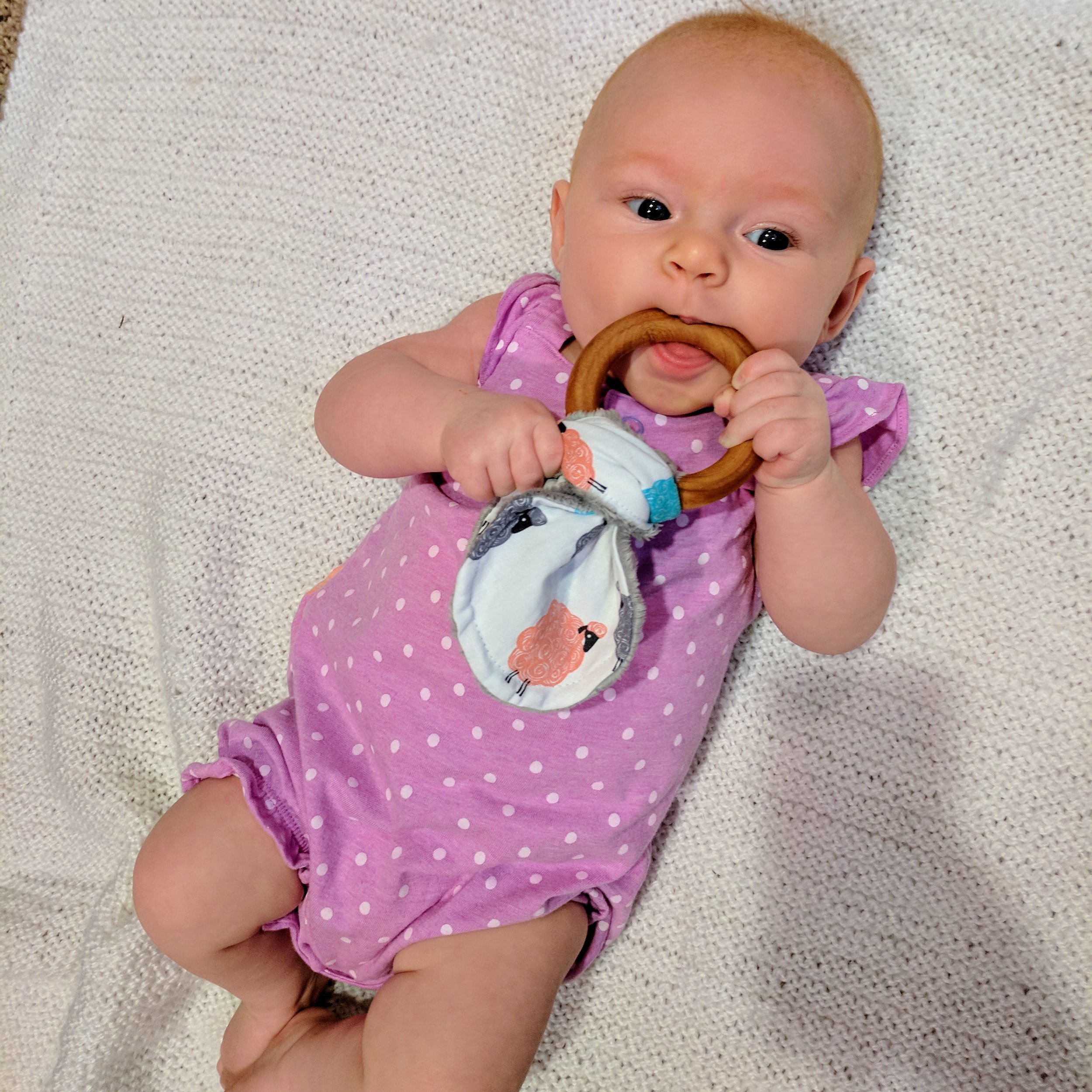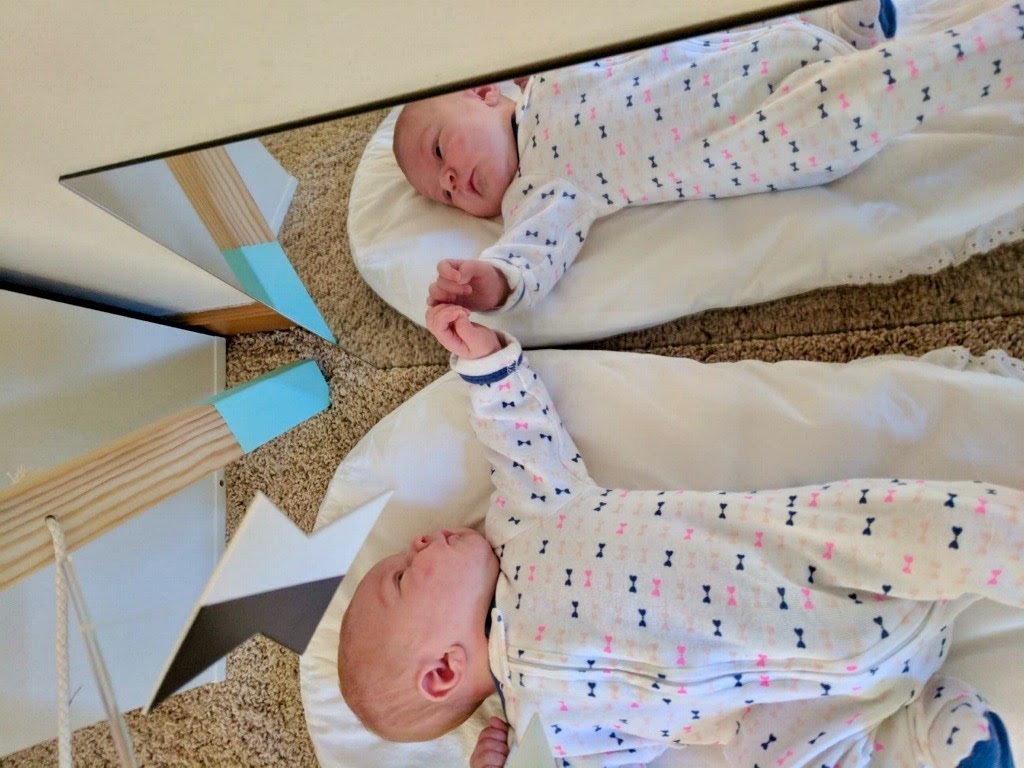Learning by Hands, and Mouth
Montessori in Real Life
"He does it with his hands, by experience, first in play and then through work. The hands are the instruments of man's intelligence." - Maria Montessori
D is now 14 weeks old! She has grown and changed so much, but one of the biggest developments recently has been her fascination and use of her hands. These past few weeks, D is all about grabbing objects, fabric, or often just her other hand, and bringing everything to her mouth. As a former developmental psych student, it has been so fun for me to geek out and watch her gradually develop this grasping and holding on skill.
Although babies are born with the palmar reflex (when you touch their palm, they close their fingers around your finger), they don't voluntarily grasp until closer to 3 months. In fact, newborns keep their hands clenched in fists for the first couple of months. But around 11 weeks, D began to open her hand in response to seeing an object (or more often my hair) to grab. Once she could hold on to an object, everything just started going to her mouth (that need to suck is so real). There doesn't seem to be a reason for D to touch an object if she can't also get it to her mouth. Let the germs begin...
When I began to notice D's interest in grasping, I started with simple objects for her to grab at, such as ribbons dangling from her wooden play gym. She especially enjoyed this when one of the ribbons had a bell to make noise! As she started opening her hand more, I helped her grasp a wooden rattle and other thin, lightweight toys to hold onto. Over time, she began to grasp the toys on her own when I held them out to her, and bring them to her mouth. She'd often just grab onto her onesie or burp cloth and bring that to her mouth. Now she has "advanced" to occasionally picking up a toy that is next to her, and holding on to the toys for longer stretches of time (we're still talking a couple minutes max). She is also starting to test her balance by grabbing a rattle or cloth in front of her during tummy time. Who knows where those little hands will take her next! In the meantime, I will just enjoy being D’s favorite grasping toy. ;)
Here are some of the toys we have enjoyed in this early grasping phase:
Ribbons hanging, with or without a bell
Teething rings








